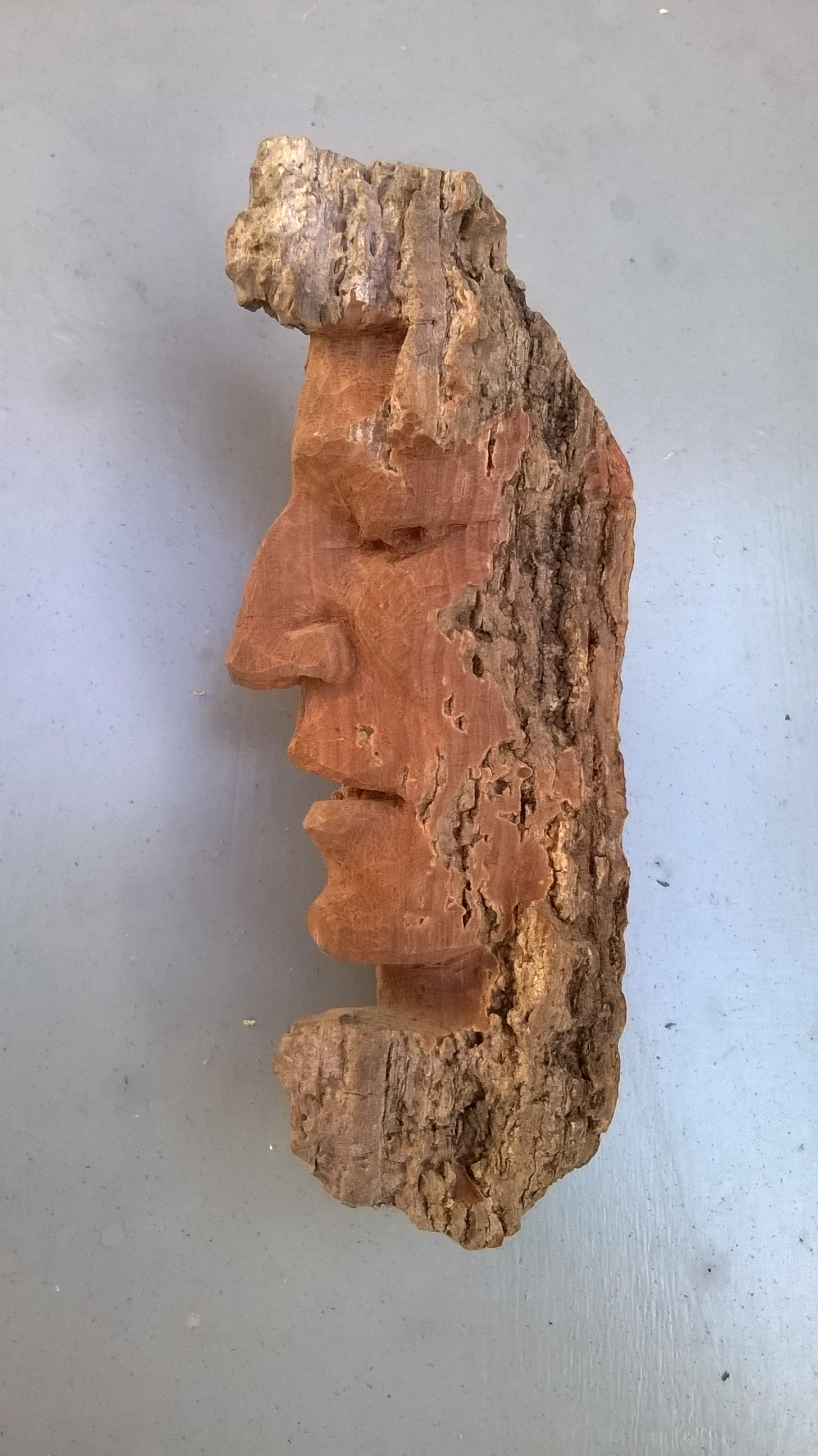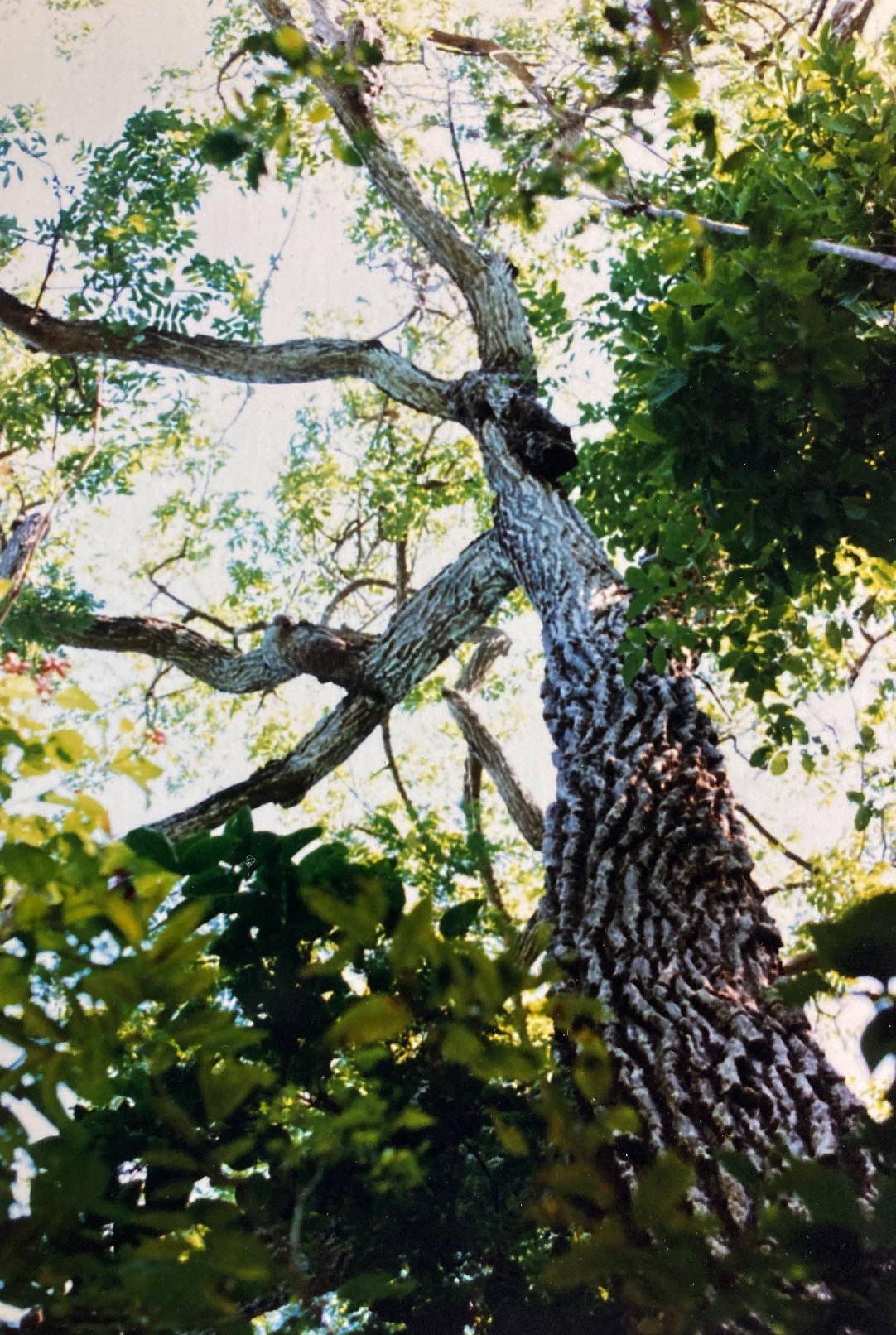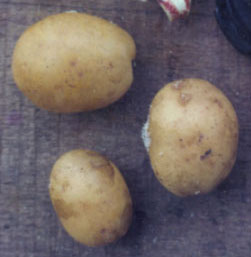Spondias mombin L.
Anacardiaceae JOBO, HOG PLUM
Tree: Common, subcanopy or canopy tree (20-35 m) with occasional individuals reaching immense – even emergent – proportions. Jobo is a deciduous tree that seems to grow best on well drained, hilltop or sloping terrain. Though it is an extremely common component of the flora in Manuel Antonio National Park, it is more characteristically associated with the dry tropical forests found in much of Northwestern Costa Rica (i.e. Guanacaste). Jobo is best known for its yellow, plumb sized, sweet-and-sour fruits that are edible but that are also said to cause vomiting if eaten in large quantities.
Description: Jobo has a straight, cylindrical trunk with relatively few, thick limbs forming a wide, spreading crown of moderate density. The tree’s bark is light gray, thick, rough, and marked with deep vertical fissures. Older specimens (with diameters greater than one meter) show some exfoliation of rounded bark plates on their lower boles, leaving behind shallow, round depressions. Leaves are imparipinnately compound, alternate and tend to be clustered near the ends of the thick, stubby twigs. They are also large (about 40 cm long by 20 cm wide) and they carry from 11 to 17 leaflets. Jobo leaflets themselves (12 cm by 3.5 cm) are narrow and somewhat curved. All foliage is shed during the early dry season, with leaf yellowing and senescence beginning in late November. Falling slowly at first, leaf-loss accelerates in late December and January. Leaf buds and young shoots begin to appear soon thereafter (late January and February ) but grow slowly – or remain stagnant – until after flowering is completed late April.
Flowers are borne on large, terminal panicles and are small (4 mm), white structures with five petals, 10 yellow stamens, and a tiny central pistil. These blossoms are very fragrant and during peak flowering periods the forest air around Jobo trees is filled with a sweet but acrid odor. Flowers appear late in the dry season and last from about mid-March until mid-May, with a peak in activity observed in April. At times, flowering is so intense that the crowns of these trees appear white and they stand out from other forest trees as seen from a distance.
Young fruits appear almost immediately thereafter and grow rapidly to full size (4 cm long by 2 cm in diameter). They remain green on the tree until August at which time they ripen, turn yellow and fall from the trees. The fruits are plumb-shaped, soft, juicy and with a thick layer of flesh around a single large, fibrous seed. Jobo fruits strongly resemble jocotes (Spondias purpurea), to which they are closely related. They are apparently not eaten by many animals remaining in Manuel Antonio, and they tend to collect underneath the trees and rot there, again filling the air with a very characteristic, fruity smell. Harvests continue until the end of October, with different trees coming into and out of production during this extended period. The single large seed germinates at the beginning of the following rainy season (about eight months later).
Similar Species: In Manuel Antonio, this is one of the only canopy species with imparipinnately-compound leaves. Ormosia velutina is another, but this is a rare tree and it sports much smoother bark. In drier areas, the presence of the Spanish Cedar tree, Cedrela mexicana, can lead to confusion since this species has similar leaves, bark, and overall proportions to those of Jobo. Close examination in this case reveals that Cedrela has an even number of leaflets per leaf (paripinnate), compared to Spondias‘ odd number (imparipinnate).
Natural History: Large numbers of Hymenoptera (bees, wasps, etc.) visit Jobo flowers during April and probably are its principle pollinators. Fruits, though largely uneaten in Manuel Antonio, are consumed by squirrel monkeys while still in the trees and coatis (Janzen & Wilson, 1983) once fallen to the ground. Recently, Radetsky (1995) has noted that spider monkeys (Ateles geoffroyi) do eat Spondias mombin fruits on Barro Colorado island in Panama. Originally native to all of Central America (from southern Mexico to the tip of Panama), they have been driven out of much of their range by habitat loss and hunting. Needing large tracts of unbroken forest – more than other monkey species – in order to survive (ref-Neotropical rainforest mammals) they disappeared from small Manuel Antonio long ago. The absence of spider monkeys in this park could help explain Spondias mombin‘s apparent lack of seed dispersal success here. Far from a unique case, several other trees whose fruits appear to go largely uneaten in Manuel Antonio (Quararibea, Trichilia) may owe this phenomenon to the recent loss of a bird or mammal species formally native to the area.

Uses: As mentioned above, the fruits are edible but strongly flavored, with sweet, sour, and bitter essences dominating. According to Nuñez (1978), the fruit is high in vitamin C but, if eaten in large quantities, can produce stomach upset and vomiting. Nevertheless, Plotkin (1993) suggests that it is one of the worlds best-tasting fruits(!) and relates that it is used in Brazil for making ice cream and liqueur. Jobo wood is white and soft and not used but Holdridge & Poveda (1975) say that the thick bark in used in artisanry. I have personally witnessed this through the work of Costa Rican artist Mario Parra, who produces many intricate sculptures using this soft and reddished colored cortex. Apparently the roots of this species store water and indigenous people used to dig them up in order to quench their thirsts during long trips (Witsberger, 1982).
Distribution: In Costa Rica, Jobo is found all along the Pacific lowland region, in both dry and wet tropical forests. It is most abundant in the very humid to dry forests of the central and northern pacific coast. Manuel Antonio, Palo Verde, Santa Rosa, and Carara all maintain populations of this species. Its range extends from Mexico and the Antilles to Peru and Brazil.


